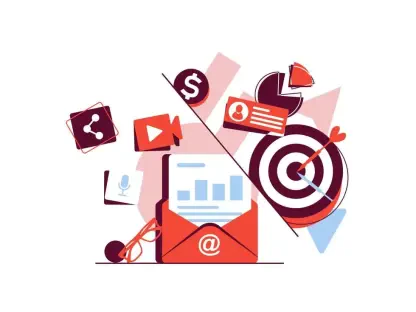Imagine being able to find all the news, articles, media appearances and social media posts relevant to your company in one place. Nowadays, traditional methods of analyzing the effectiveness of public relations activities (like press clippings) are being paired with new technologies to make this dream come true. The result is a set of media monitoring and analysis services that can help companies stay competitive in their industries.
Organizations like Cision, Meltwater and Onclusive help their clients collect news, articles and social media posts that mention both their own and rival brands and use them to advance their communications strategies. These media monitoring and analysis companies collect and analyze print, broadcast, and online data, and later turn them into simplified media monitoring reports that are easy to follow. Moreover, they also use this data to help marketers evaluate the results of their communication efforts and find new ways to improve them.
Furthermore, new technologies now allow these companies to provide their clients with online platforms and apps that help them access this information quickly, easily, and effectively. This article delves into the basics of media monitoring and analysis tools and the benefits marketers can realize by using them.
How Media Monitoring Works
All media monitoring services sprang from press clipping – a strategy that was developed in the 1800s. This method consisted of collecting written articles that mentioned certain names, brands, or companies. According to A Data Pro, the first press clipping agency was founded by Henry Romeike during that period in order to help the celebrities of the time keep up with their media appearances. As the world changed, so did the mass media: The advent of radio and TV meant that it was harder to keep up with what was said about a person, brand, or business.
As time went by, more and more press clipping agencies were founded, and media monitoring developed to include not only new sources, such as broadcast, online and social platforms, but also new strategies and technologies. Such agencies are still collecting news, articles, media appearances and social media posts, but now they include analysis of the PR operations and strategies linked to these materials. The collection process is followed by the creation of comprehensive coverage reports that can be delivered to clients via email or accessed through specific apps or platforms.
How Media Analysis Works
If media monitoring focuses on collecting, sorting and evaluating the articles and materials that mention a person, brand or company, media analysis is all about examining these articles in order to evaluate and improve communication strategies. To put it simply, media analysis is a good method of studying and evaluating various types of media to identify what works best in creating a positive image for a brand. Moreover, by examining these materials and their effects, marketers are able to alter their messages depending on the type of media, as well as the public’s reaction.
According to Focal Points, there are two main types of media analysis: Quantitative and qualitative. While the first is based solely on statistical data, the second analyzes the narrative behind the data. Both quantitative and qualitative analysis examines mass media and new media as a whole, including print, radio, TV, online content and social platforms like X, Instagram, Facebook, and YouTube. This makes media analysis an incredibly valuable tool, one that can help marketers find out not only what is said about their brand, but also why, in what tone, and for which audience and media.
How Can Marketers Use Media Monitoring and Analysis Tools?
Cision, a global leader in media intelligence and public relations software, shows that, in the digital era, “a brand’s reputation—and its impact on business outcomes—is at the mercy of millions of people across the globe who engage in constant discourse.” According to Cision, marketers can profit from using a solution that combines media monitoring services with AI technology to deliver valuable insights. Moreover, they can use this data to evaluate their strategies across all media.
However, it’s important to note that media monitoring and analysis tools can be used in more ways than one. Here are some of the ways that these platforms can help marketers improve their strategies, make informed decisions, and achieve their goals:
As a brand reputation management tool. By recording the instances of brands being mentioned across different mass-media channels, media monitoring can help marketers assess public perception.
As a crisis management tool. By detecting spikes in negative instances, media monitoring and analysis can help marketers prevent and respond to communication crises.
As a competitive evaluation tool. Almost any media monitoring tool can be used to track a brand’s competitors, while media analysis can be used to understand their strategies and market positioning.
To understand customer preferences. Media monitoring can be used to access honest client reviews and other types of feedback from real customers.
To optimize the current content strategy. Media analysis can help marketers understand how different types of content are performing in terms of reach, engagement, and sentiment.
To create better marketing campaigns. By allowing marketers to keep an eye on the real coverage before, during, and after campaigns, media monitoring and analysis can help them assess their reach and success. Later, they can use these insights to develop better campaigns.
In Conclusion
Media monitoring and analysis tools provide marketers with customized reports that help them know what’s being written about their brand and its competitors in print, broadcast, online and social media. Media analysis evaluates all the data, as well as various PR and marketing campaigns. Using these effective tools, marketers can quantify their results—helping them come up with innovative approaches to improve their communication strategies.









